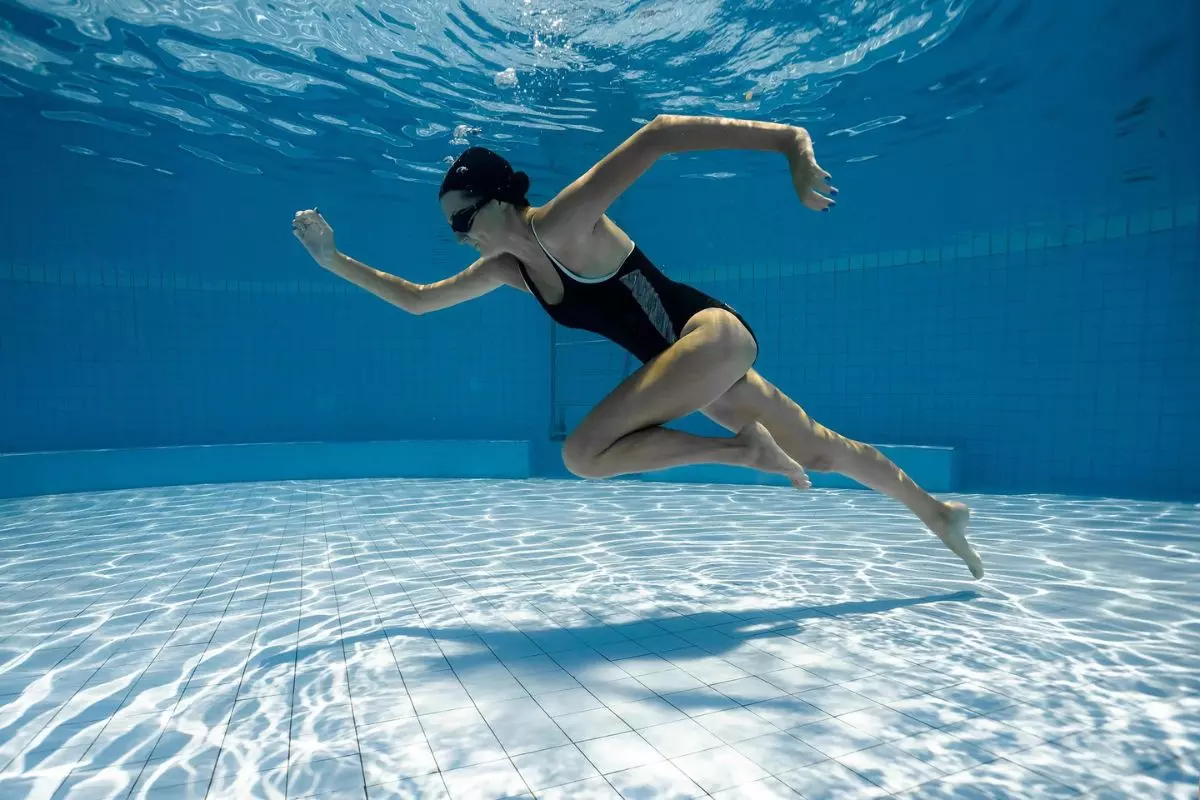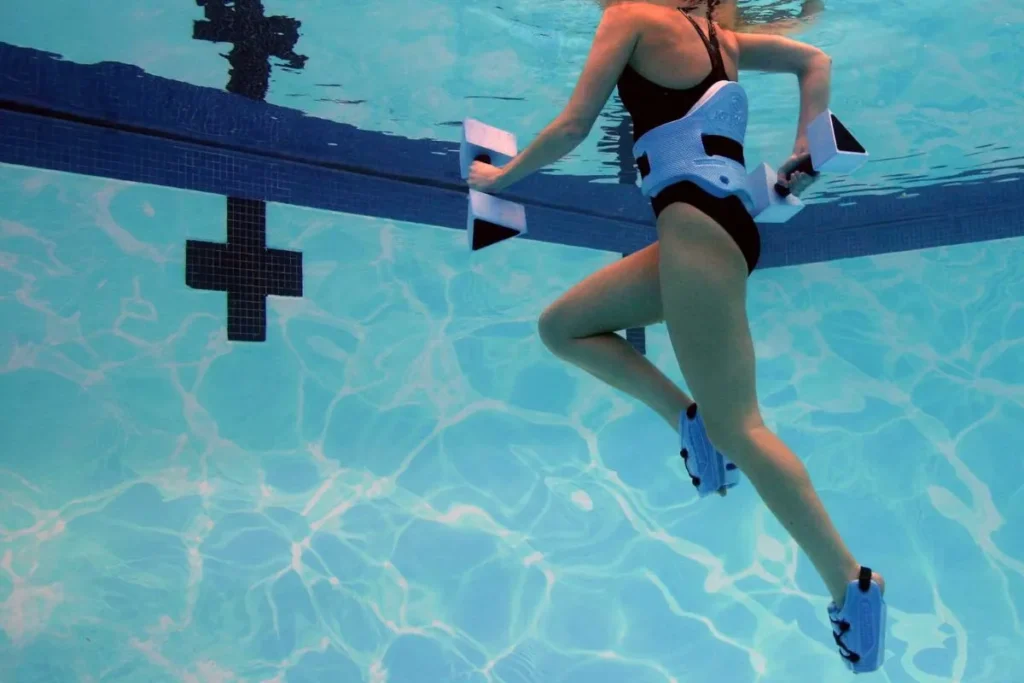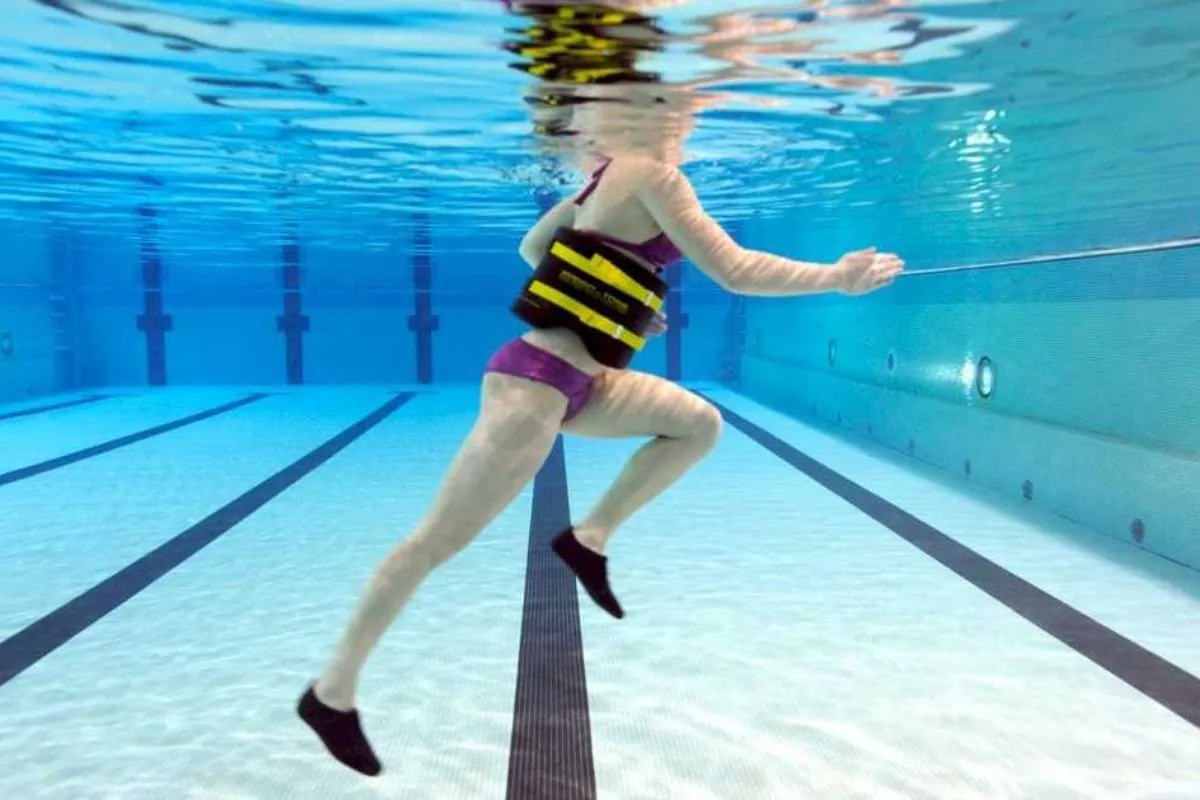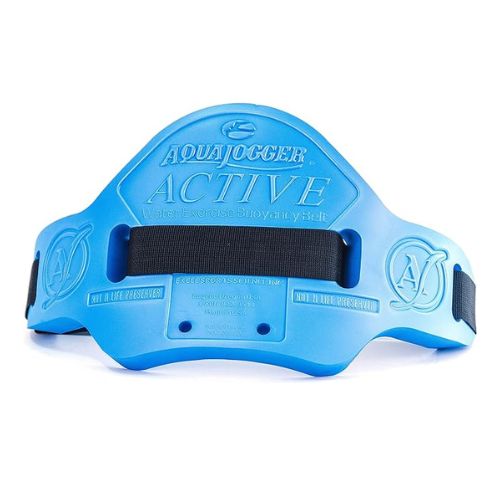Why You Should do Pool Running: 5 Workout Types + 3 Benefits
Pool running is a relatively old concept, but is not as popular as regular running. Unfortunately, regular running tops the list of competitive sports that result in lower body injuries such as strains, sprains, and stress fractures. In this article, we will discuss the benefits of running in the pool and also have a look at some great water running exercises to improve your fitness.
How to run in a pool?
Many people wonder how to run in a pool. Pool running is not a difficult workout, but it does require proper steps to reap the most benefits. To start your pool run, maintain an upright position and work against the water resistance. Move your arms and legs in a constant running motion and find a pace that works for you.

Running in the Pool: Why You Should try it
Pool running is a type of exercise that mimics the motion of jogging while submerged in water. It is a workout that is similar to normal running, with the same cardiovascular benefits and running form, but without the added wear and tear of your muscles and joints from the pounding of hard pavement.
The benefit of underwater running lies in two specific properties of water. First, the resistance provided by the water creates a challenge for your muscles, requiring them to work more to overcome the resistance, and thereby increasing their strength and endurance.
Second, when objects are placed on water they have a certain level of buoyancy that helps them float in that liquid. By being submerged in water, you reduce your weight up to 90% depending on the water depth, making it easy for the joints, nerves, and muscles to carry your weight while jogging in the pool.
Even though running in the pool is great for injured runners because they can run without impact, it’s not limited to injured people. A great benefit of aquatic running is that it allows you to replicate the same running form you would have on a land. By including water jogging in your training plan, you can increase your cardiac health and improve posture and form without stressing your body too much, which can help prevent injuries.
Aquatic running not only improves your cardiac health, but it is also a great way to build your muscles. Because water is denser than air, you must overcome increased resistance when you move. One study of female volleyball players showed that plyometric training (explosive movements like sprints and jumps) performed in water improved the jump height of participants over a six-week training period.
You might be wondering if there is a special form of water that you need to use when starting underwater running. You can just use a standard swimming pool with an ideal depth. Moreover, some people prefer to salt up their pool water, as it gives the feeling of being in the ocean and provides extra float due to the salinity.
3 Benefits of Running in the Pool
If you have decided to start running in the pool, you might want a better understanding of the benefits you can receive from this underrated workout. Here are some of the benefits of running in the pool:
1. Strengthens Your Entire Body
One of the best pool workout for runners is just running because running in a pool is far more taxing than running on the land. Since the majority of your body is submerged in a highly resistive fluid (water), every part of your body must work more when moving through the pool.
2. Eases the Impact on Your Legs
Aqua jogging significantly decreases pressure on weight-bearing joints, such as the hips and knees. Moreover, the water relaxes your spine against the forces of gravity, thus facilitating overall improved movement.
3. Boosts Your Neuromuscular Fitness
Running in water can improve the functioning of your neural pathways and the neurological messaging to your working muscles. When you increase the speed and intensity of your aqua runs, your neuromuscular activity and energy expenditure increase, too.
3 Main Forms of Training in the Pool for Runners
Not everyone enjoys running for hours. Fortunately, there are a number of different pool workouts for runners to enjoy instead of simply running.
1. Sprinting in the Pool
Once you’re in the pool, the most important part of your workout is maintaining proper form. Just like sprinting on land, you need to keep your back straight and maintain a quick turnover of at least 90 strides per minute. By doing this, you can increase your heart rate and improve your muscular strength with less wear and tear on your body.
2. Deep-Water Running in the Pool
Running in deep water typically involves the use of a flotation device or buoyancy belt. This is a great cross-training method for runners that engages your core and legs. The buoyancy belt or flotation device keeps you suspended in the water while your legs move in a running motion, providing a low-impact workout that helps you build up your endurance.

3. Training Using the Water’s Resistance
Water has greater resistance than air, so when you do different exercises in the pool, you benefit from the added resistance, which requires you to work harder. In addition to running in the water, you can opt for leg lifts, knee raises, and scissor kicks. To work out your arms, you can do arm curls under water with different weights.
5 Best Workouts in the Water for Runners
While the duration of a water workout session depends on your training goals, in general, most workouts last around 30 to 45 minutes. Let’s look at a weeklong program for pool workouts for runners.
1. Water Jogging
| Activity | Duration (min) |
|---|---|
| Warm up efficiently | 6 |
| Include high knees, butt kicks, or forward jogging at a moderate pace | 18 |
| Tread water at a slow pace | 10 |
| Cool down | 5 |
2. Water Aerobics
| Activity | Duration (min) |
|---|---|
| Warm up efficiently | 6 |
| Start your aerobics sessions, including jumping jacks or scissor kicks at moderate pace | 16 |
| Perform upper body exercises (like arm circles) at a slow pace | 11 |
| Cool down | 5 |
Subscribe to Our Running Newsletter!
Get free running tips from renowned professional athletes and discounts from top-notch brands.
3. Deep-Water Running
| Activity | Duration (min) |
|---|---|
| Warm up efficiently | 6 |
| Start your deep-water running with a floatation belt | 23 |
| Tread water at a slow pace | 12 |
| Cool down | 5 |
4. Water Resistance Training
| Activity | Duration (min) |
|---|---|
| Warm up efficiently | 6 |
| Perform walking lunges | 20 |
| Perform squats using the pool wall as support | 16 |
| Cool down | 5 |
5. Swimming
| Activity | Duration (min) |
|---|---|
| Warm up efficiently | 7 |
| Engage in freestyle swimming | 20 |
| Perform breaststroke or backstroke at a slow pace | 16 |
| Cool down | 6 |
The exercises mentioned above are a collection of aqua jog workouts for runners and basic strength workouts you do in a gym, both when combined are great workouts with minimum impacts. Each exercise is to be performed on a single day. You can perform them from Monday through Friday, then take the weekend off for rest and recovery.
3 Tips for Improving Your Overall Fitness with Pool Running
Although it seems fairly simple to just get in the pool and start running, there are a number of strategies to get the most out of your water running routine. Here are some tips to improve your overall performance and fitness with pool running.
1. Start Training in Deep Water
If you want to replicate your land running form and run fast enough to get your heart rate up to a moderate zone, then you need to be in water that’s deep enough so you don’t touch the bottom.
2. Maintain a proper form
Don’t paddle with an open hand or cupped hand. Keep a loosely closed fist and let your legs move you forward. Also, try to let the bottoms of your feet kick the water behind you.
3. Shorten Your Workout Time
Since water resistance increases your energy expenditure, you may find that you fatigue faster. Thus, it’s a good idea to reduce the length of your workout/
What Do I Need to Have with Me for Pool Running?
To start your pool run journey, you’ll need a swimsuit and a floating belt.
Instead of shorts and a typical T-shirt, opt for a swimsuit, as it can help you stay in proper shape while running. While a swimming belt or flotation device is optional, many people aren’t comfortable in the water, so using a belt can boost your confidence and result in a better workout. It also helps put you into a forward lean, similar to when running on land.

Our Recommendation gear for Pool running
Active Belt AquaJogger For Pool Training
The AquaJogger Active Belt for Pool Training is an innovative aquatic fitness accessory designed to enhance your workout experience in the water. Crafted with high-quality materials, this buoyant belt provides excellent buoyancy and support, making it the leader in aquatics exercise.
Frequently Asked Questions About Pool Running
Is running in the pool good exercise?
Yes, running in the pool is a great exercise, as it stresses your muscles but results in less impact on your joints.
Does running in the pool help me lose weight?
Yes, running in the pool can help with weight loss, because it is a cardiovascular exercise that burns calories.
Does running in a pool build muscle?
Running in the pool can help you build muscle, particularly in your legs. Since your legs are moving through the water, the muscles are engaged (particularly the thighs and quadriceps), which gives them an effective workout.
Final Thoughts on Pool Running
In conclusion, pool running is a great alternative to traditional running because it limits the impact on your joints. Public pools are a great place for underwater running, as they often have lanes specifically designated for running. If you have access to a pool and are looking for a way to change up your training routine, then you should definitely consider aquatic running.
Also read:
- Best Running Rain Jackets
- Foot Goes Numb When Running
- Best Running Shoes For Achilles
- 30 minute 5k
- Running With Glasses
- How Many Miles Is 30 Minutes
- Banana Before Run
- Best Weighted Vests for Running
- Best Running Hats
References:
- COACH AMY’S DEEP WATER RUNNING TIPS FOR INJURED ENDURANCE ATHLETES // Coach Amy PT: https://www.coachamypt.com/blog/2021/12/12/coach-amys-deep-water-running-tips-for-injured-endurance-athletes
- Enhanced aerobic capacity with deep water running // PMC: https://www.ncbi.nlm.nih.gov/pmc/articles/PMC3862662/
- Aquatic plyometric training increases vertical jump in female volleyball players // PubMed: https://pubmed.ncbi.nlm.nih.gov/16260986/
- TED: The Economics Daily image // U.S. Bureau of Labor Statistics: https://www.bls.gov/opub/ted/2016/sports-and-exercise-among-americans.htm
- Aquatic Exercises for the Masses: Dream or a Reality? // ACSM: https://www.acsm.org/blog-detail/acsm-certified-blog/2019/09/03/aquatic-exercises-for-athletes
If you have any questions or suggestions, you can contact us via email – [email protected]







